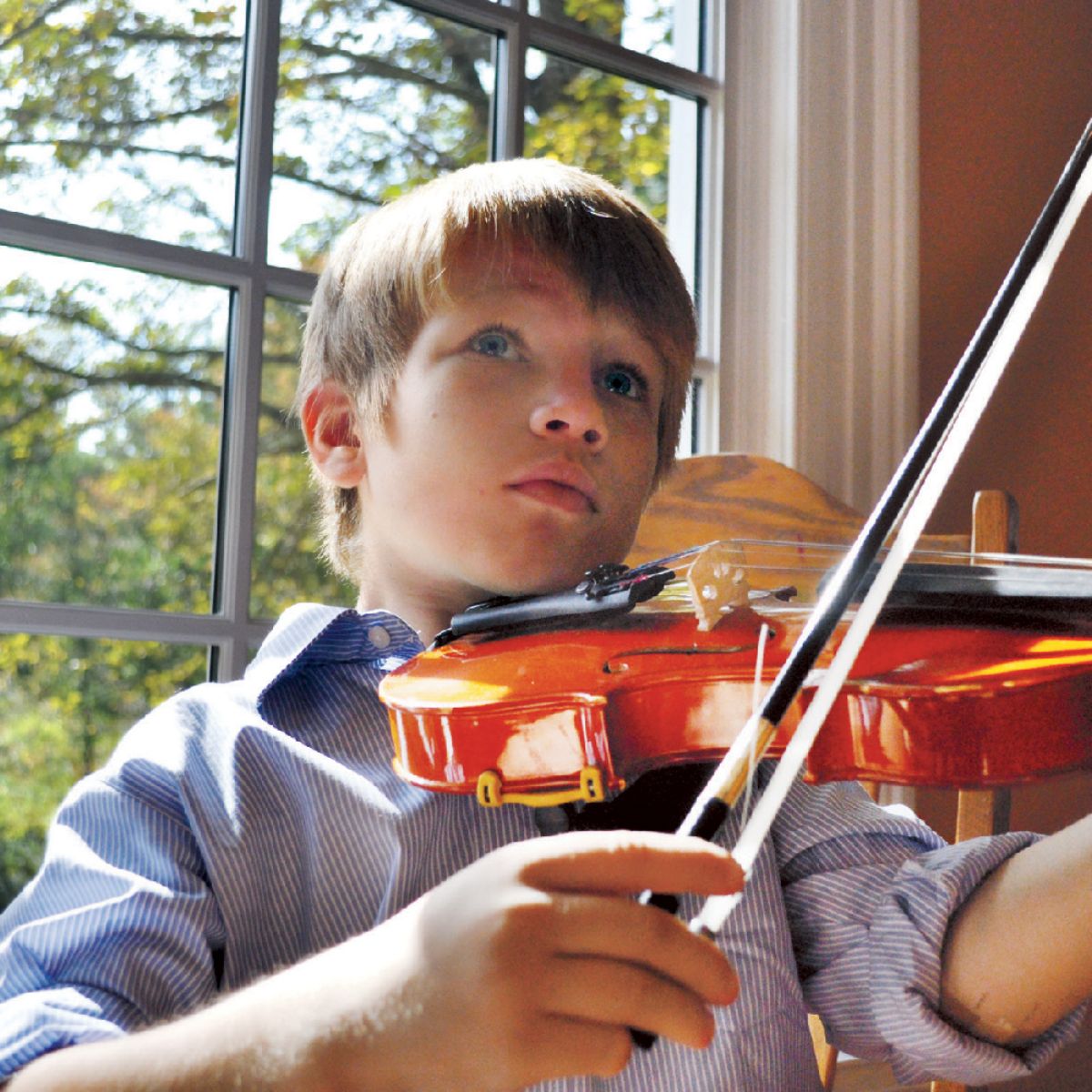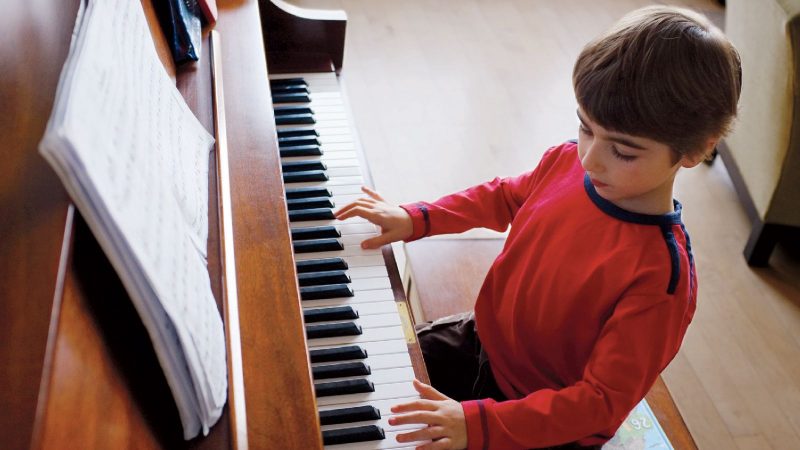Practice makes perfect, but not always
By Arnold Steinhardt
Thanks to a severe housing shortage after the Second World War, my parents were able to rent out a room attached to the back of our garage. The rumpus room, as they called it, was sparsely furnished, but enough so for a succession of people to perch there until they found more civilized quarters. I must have been twelve or thirteen and advanced enough on the violin to be practicing several hours daily. One day Sonya, a boarder, knocked on our back door. Mother ushered her in assuming she wanted to use the kitchen or bathroom facilities (as agreed upon), but Sonya shook her head. She wanted to talk to Mother about Arnie, the young boy in the house who played the violin.
“Frankly, Mrs. Steinhardt, your son’s practicing is driving me crazy,” she said. Mother apologized profusely for the daily grind of violin exercises, short pieces and concertos that clearly were getting on our boarder’s nerves. Trying to smooth the situation out, Mother gently suggested that Sonya was probably no great fan of classical music. “On the contrary, Mrs. Steinhardt,” she replied. “I’m a concert pianist. I studied with the great piano pedagogue Olga Samaroff, and believe me, your son is talented. The problem is that he doesn’t know how to practice.”
We say “Practice makes perfect” in English. Übung macht den Meister (“Practice makes the master”) is the German equivalent. I’ve been told that “Without labor there is no fruit” would be one way to say it in Russian. Most languages probably have similar expressions, but practice doesn’t necessarily make perfect if it’s the wrong kind of practice. Sonya complained to my mother that her errant son was playing the same passages over and over at full speed, without ever correcting inconsistencies or downright mistakes, running the risk of having those flaws become firmly entrenched in his muscle memory.
Sonya sat with Mother at our dining room table and spelled out some basic rules of practice for me. I still can visualize Mother, not a musician herself, painstakingly writing down page after page of instructions. Sonya talked of practicing slowly at first, of isolating problem areas for specific attention, of creative thinking in devising exercises to deal with those passages most resistant to improvement. Don’t run before you learn to walk, she said. Teach your fingers to play accurately by devising all kinds of different rhythms for them to master, she advised. Mother wrote it all down. To this very day, I have a pang of guilt thinking about her labors, for what teenager becomes disciplined overnight?
In fact, it took me many years to slowly begin to heed Sonya’s advice. My teachers and mentors contributed their own tips along the way: practice not only slowly but also quietly in order to hear things more clearly. Occasionally, play a difficult passage too fast in order to highlight technical deficiencies. The Hungarian violinist Josef Szigeti suggested that I invent ways to make a difficult passage even more so in order for it to feel easier when resuming normal play. If I had trouble shifting to a high note accurately, he challenged me to reach for an even higher one to strengthen my hand and cultivate a sense of feel on the fingerboard.

‘How do I learn how to communicate to listeners what I now in my head and feel in my heart about the music? This is either another kind of practice or beyond practice entirely.’
All this was well-intentioned advice, but at the time I wondered whether world famous virtuosi, gifted in the extreme, needed to deal with these tedious and humbling issues. The violinist Aaron Rosand told me that as a student he showed up several hours early for a Jascha Heifetz concert and talked his way backstage in order to reserve a good stage seat. As Aaron approached the stage, he heard Heifetz practicing in his dressing room. This was a one-in-a-million opportunity to observe Heifetz at work and perhaps to glean some of the secrets that made him arguably the greatest violinist of our era. Aaron slipped into the shadows and listened, mesmerized, for a good two hours. Heifetz practiced so slowly at first that the music was unrecognizable. Then he gradually increased the speed. One by one, Heifetz methodically went through the recital’s works in this manner—first the sonatas, then the showpieces, and finally the encores. In these last, Heifetz practiced the seemingly effortless little vocal slides from one note to another that he was famous for. He repeated each slide in slow motion ten, sometimes even twenty times before being satisfied. It was the kind of obsessive work you would expect from an intermediate-level violinist who was unsure of his abilities and worried about playing well. Aaron said the concert was phenomenal and unforgettable.
Still, dangers attend this kind of practice, too. At music camp years ago, a fellow violin student in the room next to mine practiced the last movement of Khachaturian’s Violin Concerto all summer long. He began on the first day with a very slow tempo — I could hear the clicks of the metronome through the thin wall separating us — and every day he increased the tempo a notch or two. At the end of the summer he gave a flawless but perfectly boring performance of the movement. The music had been kidnapped by a metronome.
After all the hours have been put in, the passage work reasonably mastered, and the artistic considerations weighed and decided upon to some satisfaction, how do I practice for the performance itself? How do I learn how to communicate to listeners what I know in my head and feel in my heart about the music? This is either another kind of practice or perhaps beyond practice entirely. Fred Astaire always said to his dance partner just before they walked out on stage, “Now don’t be nervous, and don’t make any mistakes.” On the other hand, the German violinist Adolf Busch prepared well in advance for the event. He was said to have dressed in full concert attire — tails, vest, white tie, patent leather shoes and all — in order to simulate an impending performance. I can imagine Busch designating in his mind the location of the hall’s wings, its stage and the audience. I visualize him striding into his music studio and bowing to the chairs and lamps before performing a work from beginning to end. You might call this practice of the heart and soul.
Jascha Heifetz was once asked about these very issues. His response: “Practice like it means everything in the world to you. Perform like you don’t give a damn.”
Arnold Steinhardt, first violinist of the Guarneri String Quartet from 1964–2009, writes a blog on life and music, “Fiddler’s Beat,” at arnoldsteinhardt.com.
This article originally appeared in Listen: Life with Music & Culture, Steinway & Sons’ award-winning magazine.
